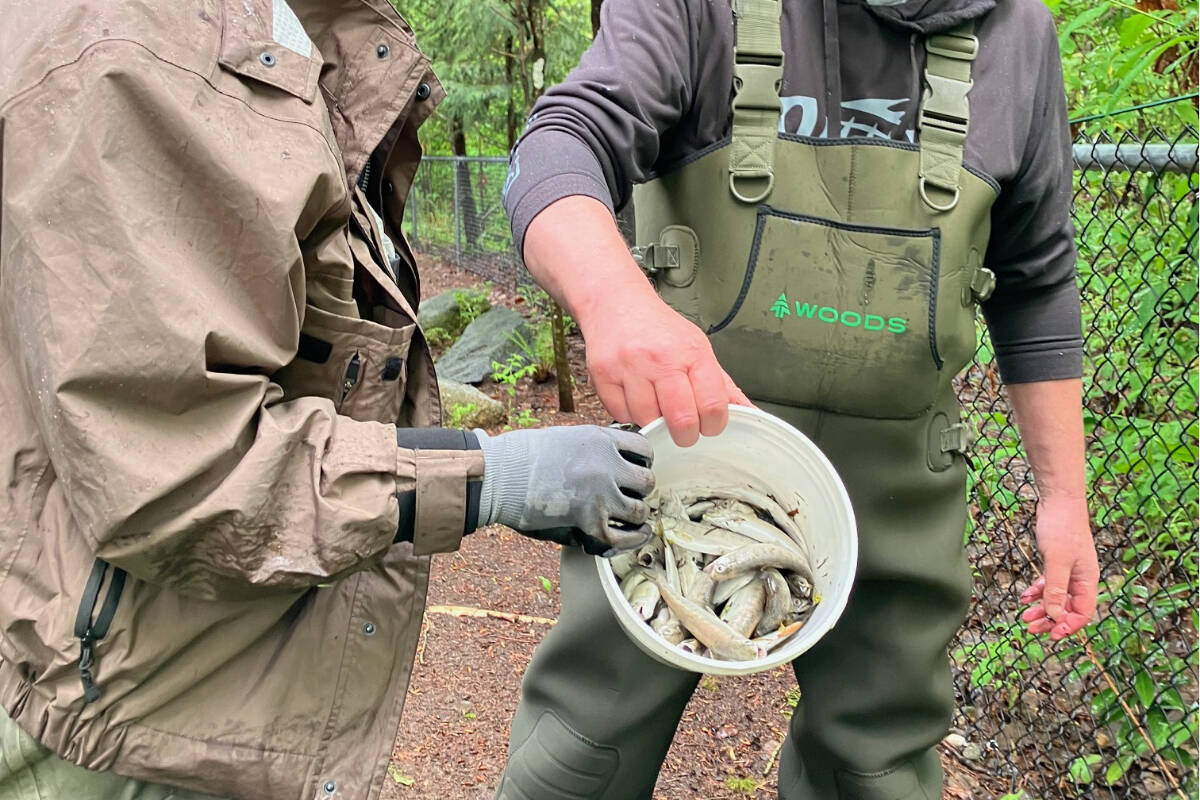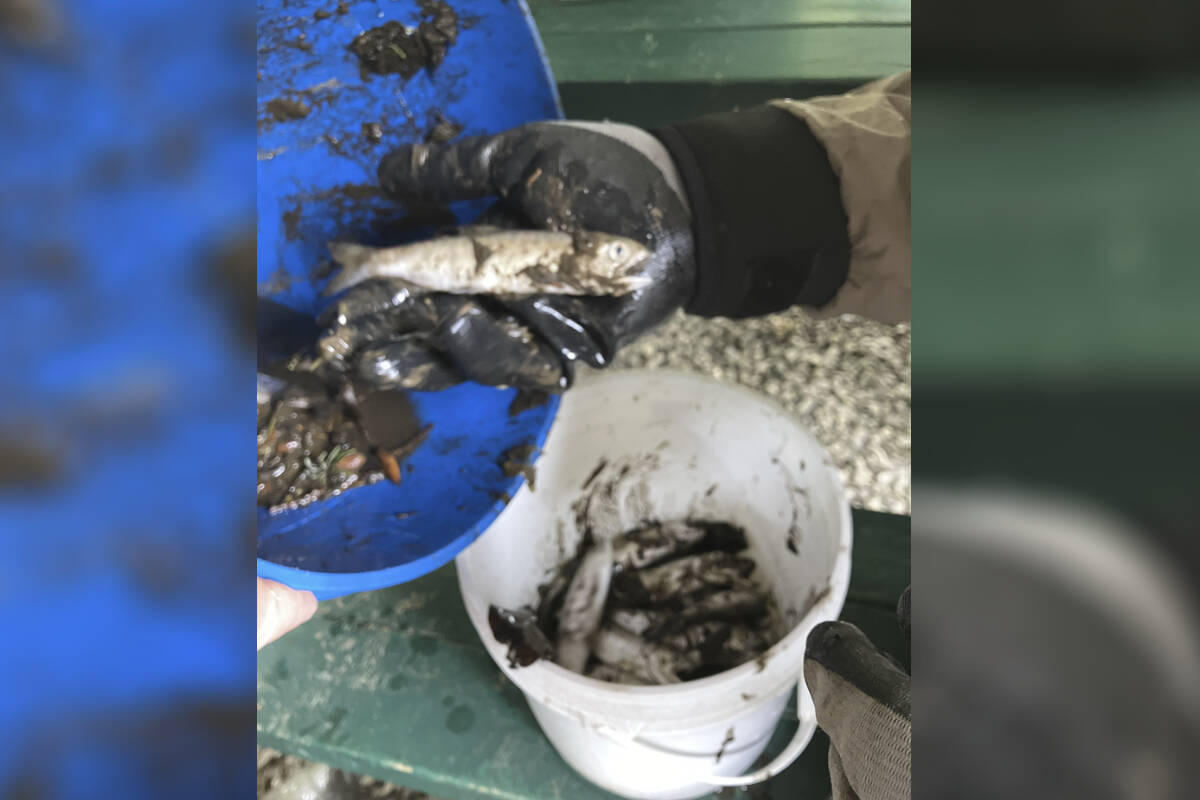A Port Coquitlam salmon hatchery lost at least 2,500 fish last month after it says an unknown pollutant entered its facility through a local creek.
Long-time Hyde Creek Watershed Society volunteer Jean Peachman said one of its members checks in on the facility every day. Two weeks ago, one of those volunteers arrived to find the creek a strange blue colour. When they looked in on the hatchery troughs, which the creek feeds into, they found hundreds of salmon floating belly-up with their mouths agape.
“It’s a very large loss,” Peachman said.
They pulled 2,300 dead fish out of the trough tanks and another 200 to 300 out of their pond on the first day, and have found dozens more since.
Peachman said they’ll likely never know exactly where the pollutant came from, since Hyde Creek is an urban waterway and can be impacted by countless sources.
She hypothesized, however, that the lack of rain leading up to the discovery allowed toxins to gather at the bottom of storm drains. When that happens, Peachman said, one quick rainfall can then flush all those toxins into the creek and into their hatchery.
“Usually, when we’ve had lots of rain, the storm drains are quite clear, and we don’t get such a heavy dose of poisons coming through.”
In an average season, the Hyde Creek Watershed Society will raise around 40,000 chum and coho salmon. So the loss of more than 2,500 fish is fairly significant for them.
It isn’t likely to have an impact on the overall salmon situation in B.C., however. Fisheries and Oceans Canada estimates its hatcheries and spawning channels release close to 400 million juvenile salmon into the Pacific Ocean each year.
Environment and Climate Change Canada told Black Press Media it is aware of the loss at the Hyde Creek hatchery, but that no immediate source of pollution has been identified. A department spokesperson said they will continue to monitor the situation.
READ ALSO: As glaciers retreat, mining claims threaten future B.C. salmon habitats: study
READ ALSO: B.C. stream watchers link coho salmon kill to tire toxin and drought


